8 Naturally Occurring Hummingbird Colors: An Overview (with Pictures)
Last Updated on
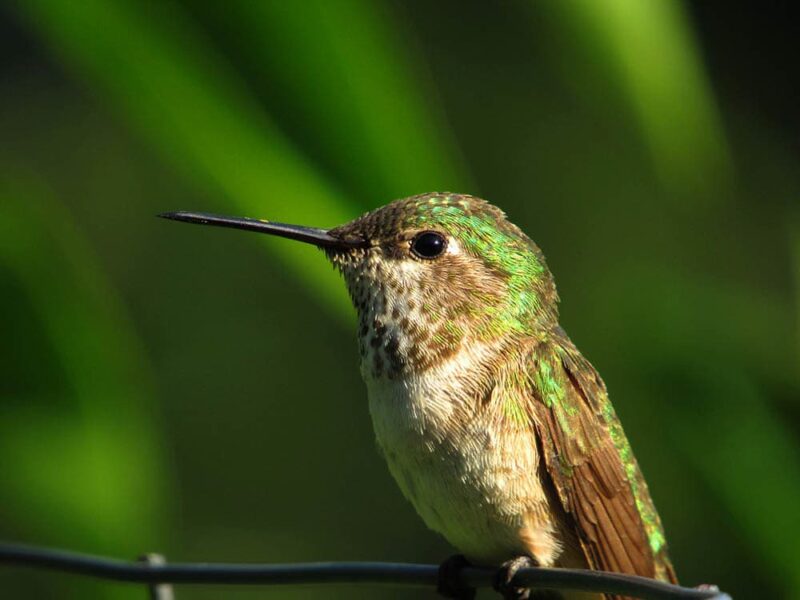
No matter how many times you are fortunate enough to spot a hummingbird hovering through the foliage, their incredible colors will have you drop your jaw in awe every time.
These astonishing birds dazzle with various colors that seem to harness every color available. It may surprise you to know that hummingbirds are only made up of eight different colors.
The show of rainbow colors is due to light refraction in their specialized feathers, which play a significant part in their social life.

The 8 Colors of Hummingbirds
1. Blue
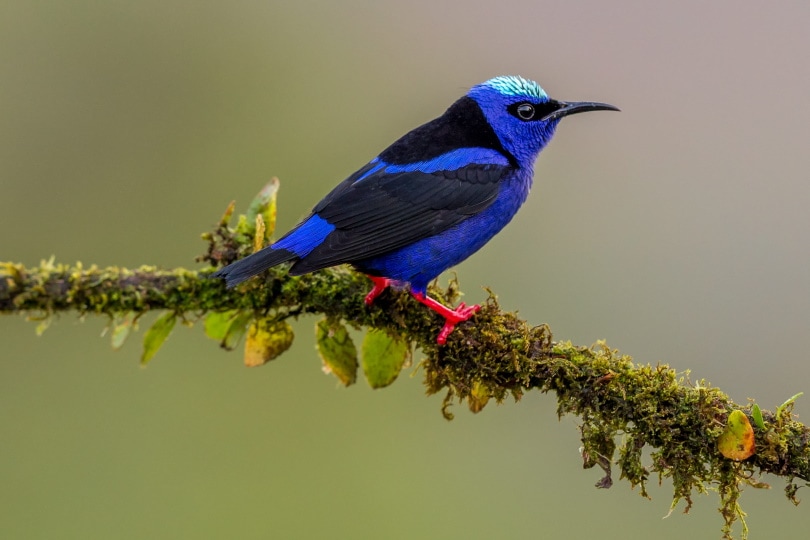
Now, this first color is debatable if you ask any ornithologist. Other colors, such as red and yellow, come from actual pigments, called carotenoids, from the hummingbird’s diet.
In contrast, no pigments create blue in any bird’s feathers. Blue is a structural color that appears when light reflects off keratin proteins in feathers. It depends on what you define color as, what your eyes perceive, or the molecules that make them up.
2. Orange
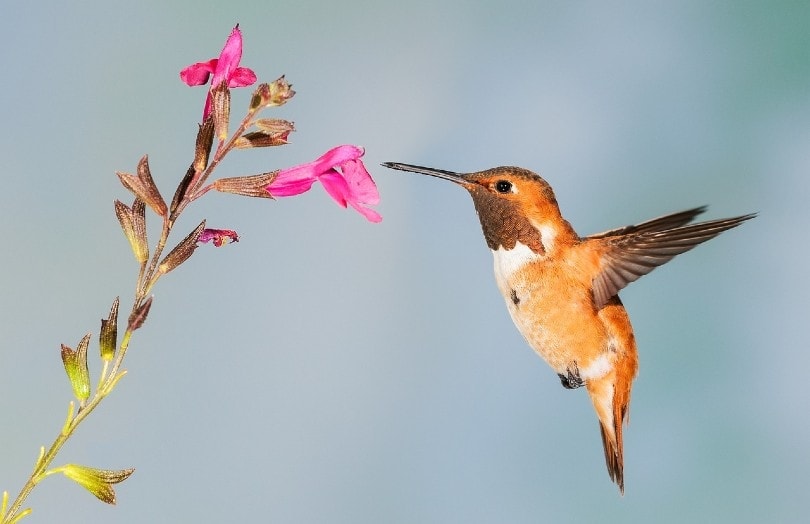
Orange hummingbirds can range from bright oranges to deep metallic bronzes. In North America, the most notable orange-based hummingbird is the Rufous hummingbird.
The male of this species resembles a glowing fire, with a bright orange underbelly and backside and a stunning red throat (called a gorget). Meanwhile, the female is brown with a flush of orange around her throat.
The Allen’s hummingbird is also primarily orange, but it is less vivid with a coppery tone.
3. Red
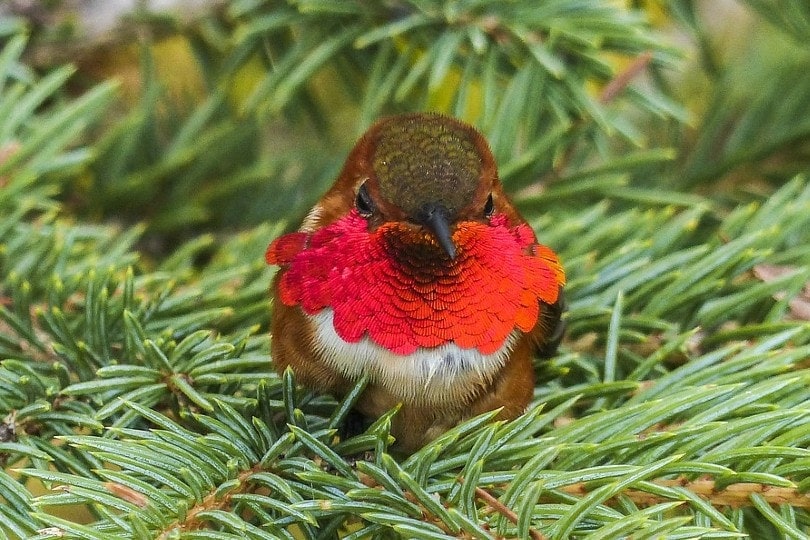
Red coloration has developed on four out of five native North American hummingbirds. The rufous, Allen’s, ruby-throated, and Anna’s hummingbird all possess red gorgets. The tone various, with some strikingly bright and others darkly iridescent.
This fiery color must pose a valuable communication and attraction tool in male hummingbirds for it to be so widely adopted.
4. Green
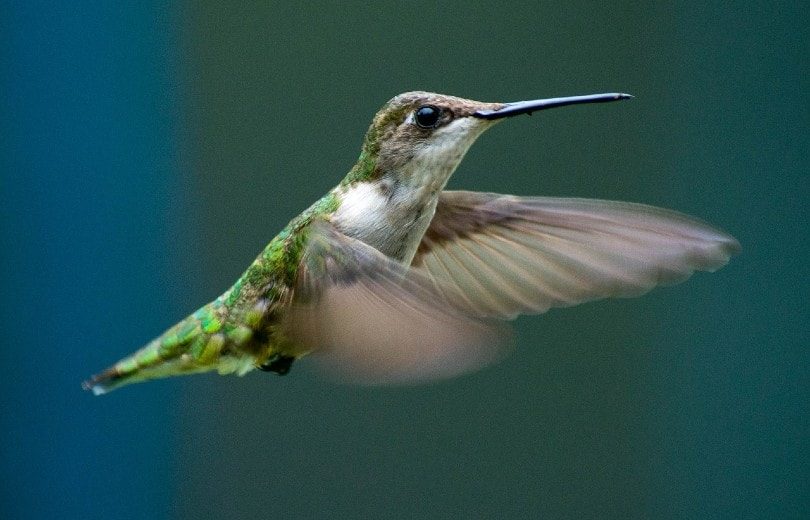
Hummingbirds use green tones as camouflage amongst the foliage. All five American hummingbird species incorporate green tones somewhere in their feathering. It’s most often seen on the back to offer camouflage when viewed by aerial predators.
Muted greens are also prevalent on the dull females, often blending with brown tones.
5. Purple
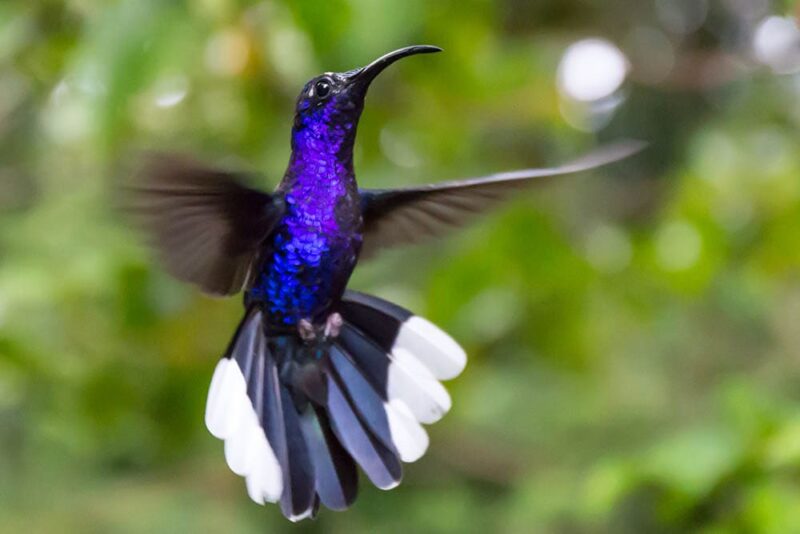
Purple is a color closely aligned with iridescence and metallic tones. These colors can somehow be both bright and striking while having dark undertones.
While purple tinges may be picked up within blue and red tones, the male Costa’s Hummingbird has vibrant purple coloration. A brilliant purple head sharply contrasts a dull gray belly and greenback.
6. Pink
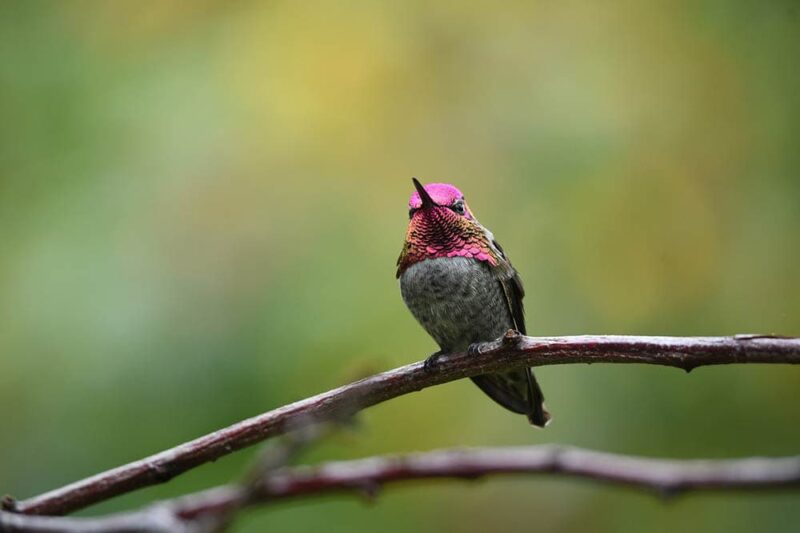
The shades of pink are under the red light spectrum of color. Iridescent red can reflect so brightly it resembles vivid shades of pink.
This is exhibited beautifully with Anna’s hummingbird, with the male having a bright pink throat and head. It’s no wonder these little birds impress the ladies so much!
7. White
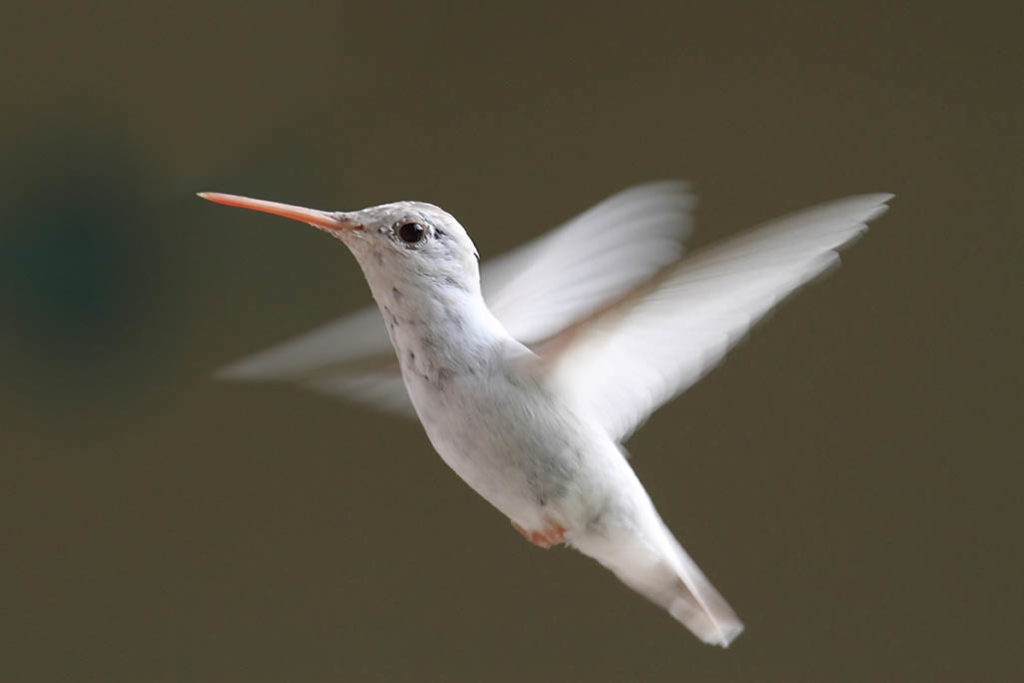
Some patterning on hummingbirds reflects all light to leave feathers absent of colors. This lack of color is strategically placed to pronounce colorful throats, heads, wings, and backs.
The female Costa’s hummingbird is distinguishable despite dull coloration for her signature white eyebrows and underbelly, a vast distinction from the impressive male.
The ruby-throated hummingbird also displays some patches of white on its underbelly, which puts his red gorget on full display in contrast.
8. Gray
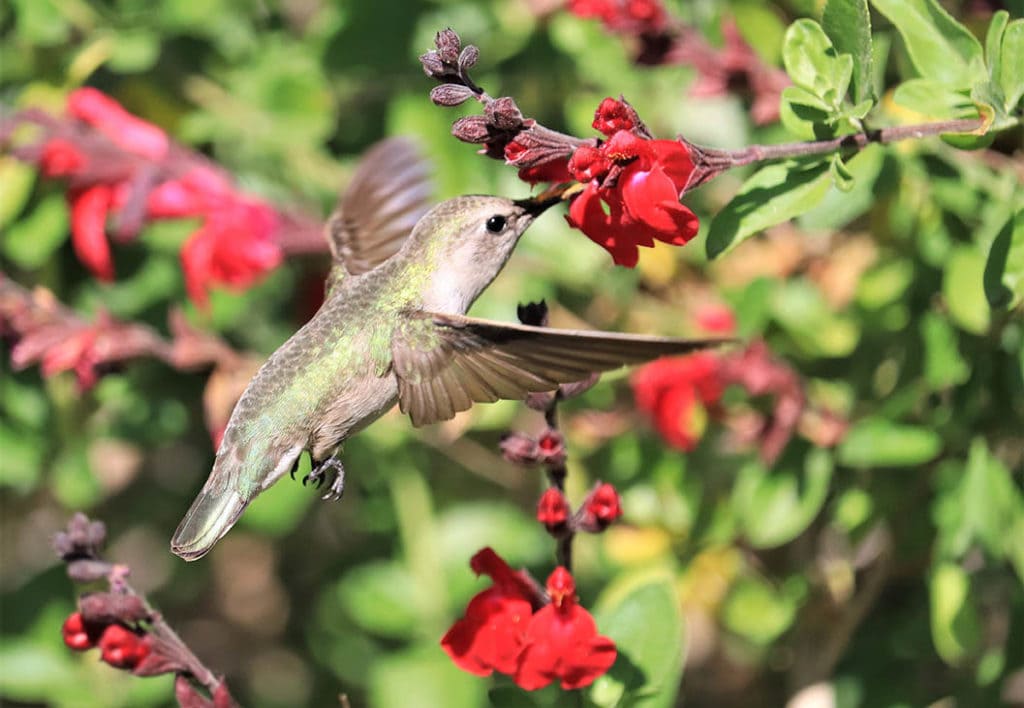
Gray coloration acts similarly to white by breaking up the vivid colors. Gray is usually mottled or mixed with other colors to mute them, and this is mostly seen on the back and underbelly.
Both the ruby-throated and Anna’s hummingbird have a belly of mixed green and gray that can blend seamlessly into the natural environment.

How Are Hummingbirds So Colorful?
What sets the coloration of hummingbirds aside from other bird species with similar basic colors is their ability to reflect and refract (bend) light.
Many other bird species have color within basic structures from color pigments. Hummingbirds are found to have the same basic feather structure but unique light reflecting pigments.
These oddly shaped pigments cause reflected light to bounce off in various directions, causing a display of rainbow colors and giving them an iridescent quality.
This can be seen in other bird species that are dark blue, black, and purple. However, their iridescence comes from protein structures in the feathers, not pigment structures like hummingbirds.
Hummingbird Colors and Mate Selection
Male hummingbirds are a lot more colorful than their female counterparts. What is especially obvious is their bright gorgets. This throat area is vital for communication and courtship as it is on full display as they face potential mates.
Their reflecting colors attract the attention of mates and ward off the competition of other males.
The show of hummingbird colors looks incredible to our human eyes, but even more so to the highly developed vision of birds.
Birds possess a fourth color cone in their eyes (we only have three) that allows them to see colors on a broader spectrum, including UV. This insane color perception helps them locate flowers for food sources and plays a role in mate selection.
The most physically fit males will be apparent to female suitors by the coloration of their faces. These subtle differences between males are not visible to the human eye.

Conclusion: The Changing Colors of Hummingbirds
Because most coloration in hummingbirds comes from light reflection, not pigment, these birds often appear to change color as they move in and out of light sources.
In darkened areas, the colors of a hummingbird will be muted and dull, with blues appearing plain black.
The hovering and active nature of hummingbirds moving across a bush of flowers creates a dazzling display that appears to be changing colors before our very eyes. This is solely caused by the light direction and reflection changing as they move.
This can have benefits for predator evasion, as male hummingbirds position themselves to reflect less color when under threat, hopefully going unnoticed by nearby predators.
- Related Read: 10 Best Hummingbird Feeders: Reviews & Top Picks
Featured Image Credit: Avia5, Pixabay
About the Author Sophie Herlihy
After an early start in the veterinary industry and as a conservation educator at Disney’s Animal Kingdom in Florida, Sophie has since been a successful Zookeeper and Conservationist, specializing in native New Zealand species. When she isn't bird watching in native forests, she can be found with her husband on their sheep and beef station, far from civilization. Sophie enjoys her writing career as it provides opportunities to help and support pet owners of all kinds and getting to research and write about a broad range of topics. The only downside is the long list of strange searches in her internet history!
Related Articles:
How to Clean a Rifle Scope: 8 Expert Tips
Monocular vs Telescope: Differences Explained (With Pictures)
10 Types of Hummingbirds in Arkansas (With Pictures)
8 Types of Hummingbirds in Nebraska (With Pictures)
5 Types of Hummingbirds in Idaho (With Pictures)
3 Types of Hummingbirds in Mississippi (With Pictures)
8 Types of Hummingbirds in Kansas (With Pictures)
5 Types of Hummingbirds in West Virginia (With Pictures)
